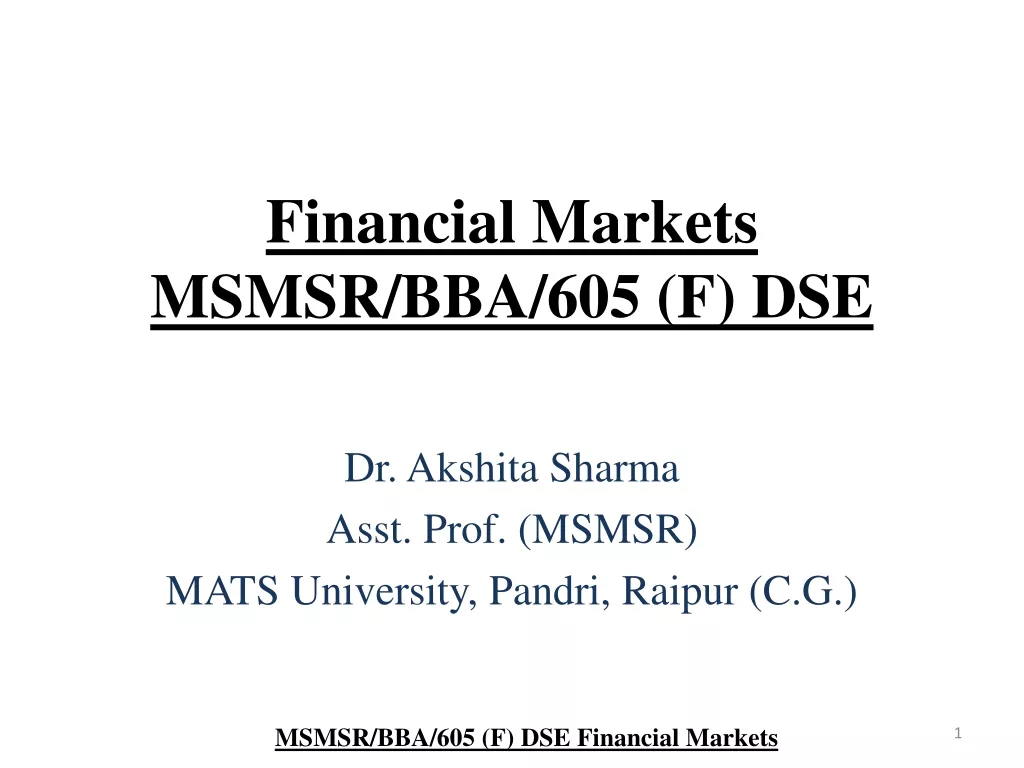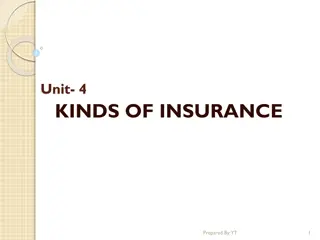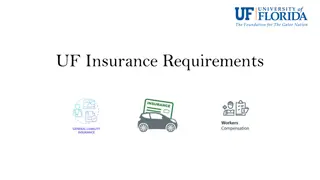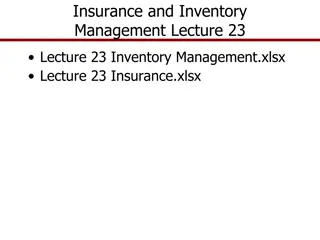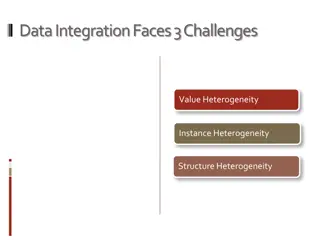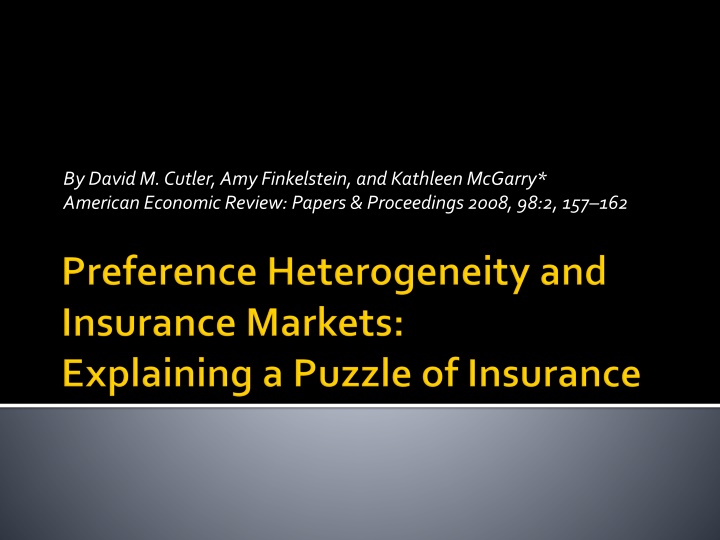
Insurance Demand: Insights on Risk Aversion and Preferences
Explore the nuances of insurance demand, where risk aversion and preferences play crucial roles. Discover how varying socioeconomic factors influence insurance purchases and how risk-taking behavior impacts diverse risky choices beyond health insurance.
Download Presentation

Please find below an Image/Link to download the presentation.
The content on the website is provided AS IS for your information and personal use only. It may not be sold, licensed, or shared on other websites without obtaining consent from the author. If you encounter any issues during the download, it is possible that the publisher has removed the file from their server.
You are allowed to download the files provided on this website for personal or commercial use, subject to the condition that they are used lawfully. All files are the property of their respective owners.
The content on the website is provided AS IS for your information and personal use only. It may not be sold, licensed, or shared on other websites without obtaining consent from the author.
E N D
Presentation Transcript
By David M. Cutler, Amy Finkelstein, and Kathleen McGarry* American Economic Review: Papers & Proceedings 2008, 98:2, 157 162
Consumers vary in their probabilities of various states of the world occurring, which motivates those with worse risks to buy more insurance (Rothschild and Stiglitz) Less common to emphasize, people facing higher costs for the same risk buy more insurance (people living in New York City (high prices) versus south (low prices) Preferences held fixed when doing analysis.
In many cases it is the low risk people who buy more health or other types of insurance. Medigapinsurance (Medicare supplementary policies) High income workers buy more insurance than low income workers Elderly on Medicare are less well insured than many privately insured consumers Families with two workers buy more insurance than individuals buy single coverage Owners of luxury cars buy more insurance than owners of low cost cars.
Develop model where probabilities are the same, but people differ in their preferences. Specifically in their risk aversion. Some people are risk takers while others are risk averse. Risk taking behavior shows up in all aspects of life, not just health insurance. This paper examines how risk taking behaviors are correlated across diverse risky choices.
Theory models Chiappori, Pierre-Andre, Bruno Jullien, Bernard Salanie, and Francois Salanie. 2006. Asymmetric Information in Insurance: General Testable Implications. Rand Journal of Economics, 37(4): 783 98 de Meza, David, and David C. Webb. 2001. Advantageous Selection in Insurance Markets. Rand Journal of Economics, 32(2): 249 62. Automobile insurance (Alma Cohen and Liran Einav 2007), Long-term care insurance (Finkelstein and McGarry 2006), Medigap (Fang, Keane, and Silverman 2006), Annuities (Einav, Finkelstein, and Paul Schrimpf 2007).
Heterogeneity in preferences may be as, or more, important than heterogeneity in risk in explaining insurance demand. Use empirical evidence from diverse risks to quantify the correlations and direction but not magnitudes Use clever choices of risky behaviors and relate to both insurance coverage and outcomes
Use individual-level data from the original cohort of the Health and Retirement Study (HRS) to examine the holding of term life insurance and private acute health insurance among people age 51 to 61 in 1992. Use a second HRS cohort, the Asset and Health Dynamics (AHEAD) sample, to examine Medigap insurance, long- term care insurance, and annuities among people age 65 to 90 in 1995. Examine contemporaneous reports of medical care use, and also use the panel nature of these data to track mortality and nursing home outcomes for individuals in both cohorts through2002.
Two main findings. 1. Individuals who engage in risky behaviors (smoking, drinking, or prior employment in jobs with higher mortality rates) or who do nottake measures to reduce risk (preventive health activities or wearing a seat belt) are systematically less likely to buy each of five insurance products. 2. These same individuals tend to have higher expected claims for life insurance and long-term-care insurance; lower expected claims for annuities; for Medigap and acute health insurance, there is no systematic relationship between the behavior measures and expected claims.


